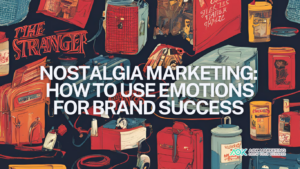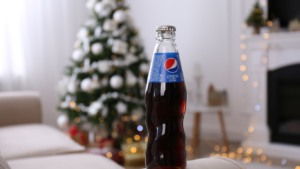One marketing strategy that has proven remarkably effective is nostalgia marketing. By evoking fond memories of the past, brands can create powerful emotional connections with consumers, driving engagement and loyalty. This article explores the psychology behind nostalgia marketing, its effectiveness, and how businesses can leverage this strategy for success.

Understanding Nostalgia Marketing
Nostalgia marketing is the practice of using themes, imagery, or products from the past to evoke positive emotions in consumers. It taps into our tendency to view the past through rose-tinted glasses, associating it with comfort, happiness, and simpler times.
The Psychology Behind Nostalgia
Emotional Comfort: Nostalgia acts as a psychological comfort food, providing a sense of security and belonging in uncertain times.
Identity Reinforcement: Nostalgic experiences help reinforce our sense of identity by connecting us to our past selves and shared cultural experiences.
Positive Bias: People tend to remember positive experiences more vividly than negative ones, creating a favorable backdrop for marketing messages.
Social Connectedness: Nostalgia often involves shared experiences, fostering a sense of social connection and community.
Why Nostalgia Marketing Works
Emotional Engagement: By tapping into positive memories, it creates a strong emotional response, making brand messages more impactful and memorable.
Trust Building: Familiar elements from the past can make a brand feel more trustworthy and authentic.
Differentiation: In a crowded marketplace, nostalgic elements can help a brand stand out and create a unique identity.
Increased Willingness to Spend: Research has shown that nostalgia can increase consumers’ willingness to spend money on products and experiences.
How to Use Nostalgia Marketing Effectively
Know Your Audience: Different generations have different nostalgic triggers. Tailor your approach to your target demographic.
Authenticity is Key: Ensure that your nostalgic elements align with your brand identity and values.
Blend Old and New: Combine nostalgic elements with modern features or technology to create a bridge between past and present.
Use Multi-Sensory Approaches: Incorporate visual, auditory, and even olfactory cues to create a more immersive nostalgic experience.
Leverage User-Generated Content: Encourage customers to share their own nostalgic experiences related to your brand or product.
Time it Right: Consider using nostalgia marketing during times of uncertainty or stress when people are more likely to seek comfort in the familiar.
Examples of Successful Nostalgia Marketing
Nintendo’s NES Classic Edition: Reintroducing classic games in a modern format.
Stranger Things: Netflix’s hit show that capitalizes on 1980s nostalgia.
Pepsi’s Throwback Campaign: Using vintage packaging and original sugar recipes.
 Conclusion
Conclusion
Nostalgia marketing is a powerful tool that, when used effectively, can create deep emotional connections with consumers. By understanding the psychology behind nostalgia and implementing it strategically, brands can enhance their marketing efforts, build stronger relationships with their audience, and ultimately drive business success. As with any marketing strategy, the key lies in authentic implementation that aligns with your brand’s core values and resonates with your target audience.
About The Author
Jana Legaspi
Jana Legaspi is a seasoned content creator, blogger, and PR specialist with over 5 years of experience in the multimedia field. With a sharp eye for detail and a passion for storytelling, Jana has successfully crafted engaging content across various platforms, from social media to websites and beyond. Her diverse skill set allows her to seamlessly navigate the ever-changing digital landscape, consistently delivering quality content that resonates with audiences.
 Conclusion
Conclusion



